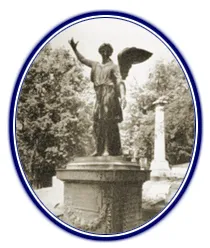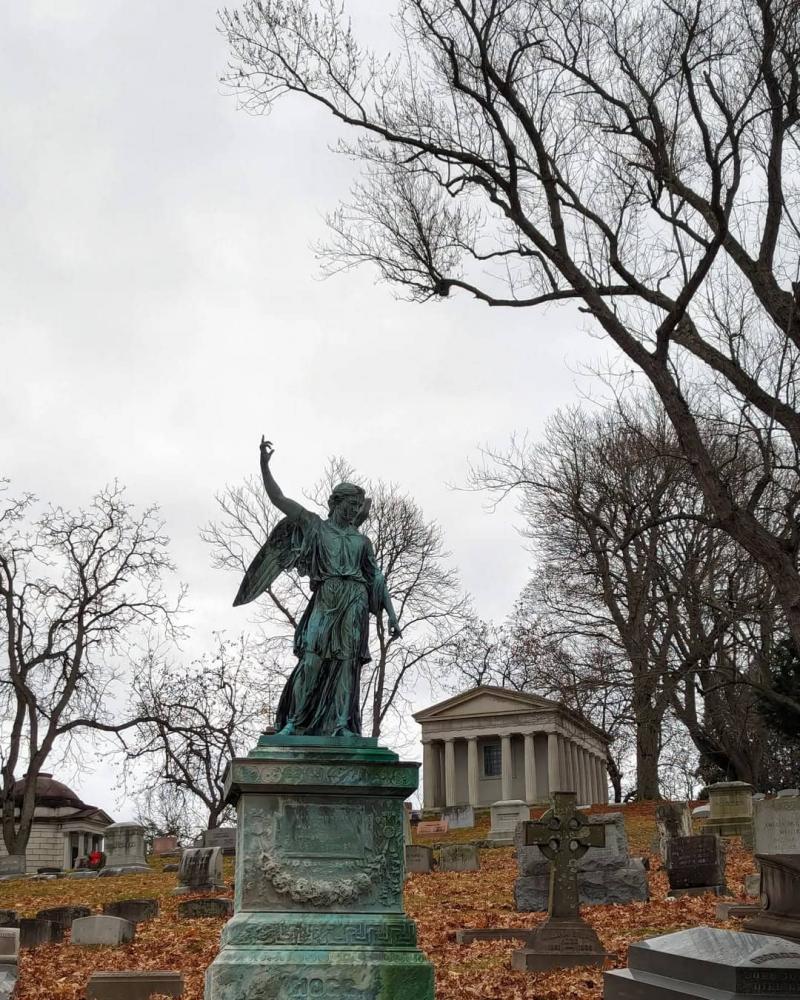Around 1850, after George Hogg died in 1849, his family commissioned a distinguished monument for their lot in Allegheny Cemetery—Pittsburgh's newly established exemplar of the "rural" cemetery movement. Created by renowned sculptor Henry Kirke Brown in 1855, the centerpiece is a nearly life-size bronze angel (the sculptor called it "Angel of the Resurrection", but known as "Hogg Angel"), masterfully rendered with exquisite attention to the flowing folds of its classical chiton and the graceful muscularity of its contrapposto stance.
One wing lifts gently, as if the figure has only just descended. With an unwavering gaze, the angel gestures: the left hand points earthward, and the right hand is extended toward the heavens—symbolizing the belief that while the body rests below, the soul has ascended.
The Hogg Angel stands among the earliest American angel sculptures of the rural cemetery era, which gained prominence in the latter half of the nineteenth century. These celestial figures perform a variety of symbolic roles, including guiding souls heavenward, consoling mourners, adorning graves with flowers, and bearing departed spirits aloft. As the only beings able to traverse the boundary between earth and heaven, angels offered solace and hope—bridging the mortal and divine realms and giving visual form to immortality.
In Luke 20:36, Jesus refers to "the children of the resurrection" as "equal to angels," who "cannot die anymore." Such scripture underscores the angelic promise of eternal life — a promise embodied in the Hogg monument.
Stylistically, the angel reflects the neoclassical trends of mid-nineteenth-century funerary art, inspired by ancient Greek and Roman forms. Early Christian artists drew inspiration from classical sources, borrowing the winged figure of Nike—known as Victory in Roman mythology—to represent angels. While Nike was invariably female, Christian angels were often depicted as genderless and typically portrayed without overtly sexual characteristics, as seen in the Hogg figure.
Although the Hogg Angel is cast in bronze — a rarity for its time—most cemetery angels of the period were sculpted in marble. Marble's softness allowed artists to capture the intricate textures and flowing drapery of classical attire, lending these monuments their expressive depth.


